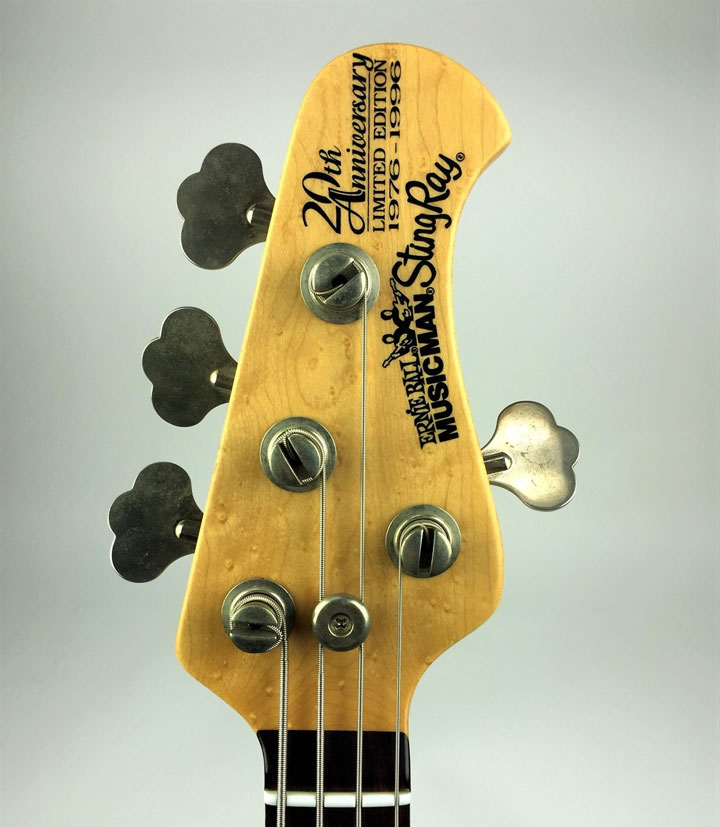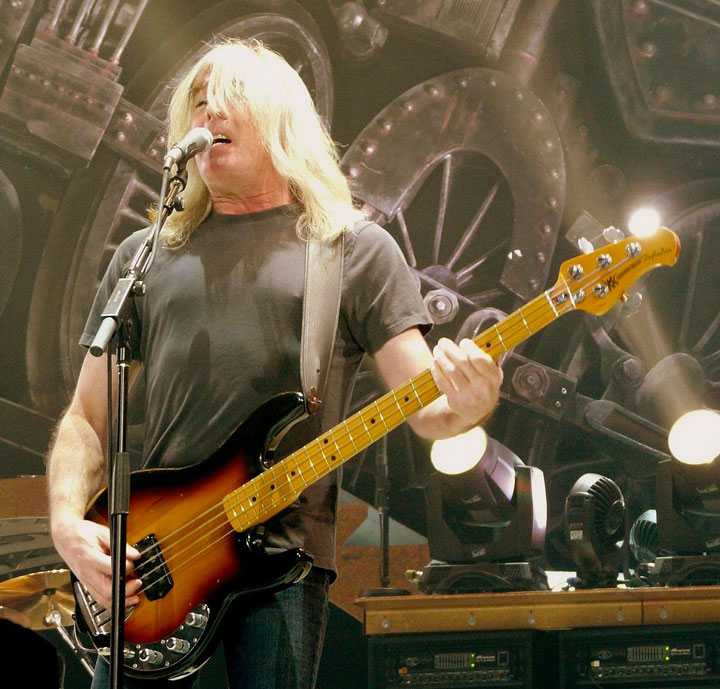Every successful guitar company has its signature axe. A select few have more than one. For Music Man, that signature instrument is the StingRay bass, which was first introduced in 1976.

'78 Music Man StingRay
Easily recognized by its large oval mid-body pickguard and its signature headstock: three strings on the top, one on the bottom, the StingRay has become a staple among a vast array of gigging and studio musicians alike. It garnered immediate attention for its distinctive strength of sound and its ability to cut through the muck on the bottom end. But the StingRay also represented a major technological innovation.
This innovation was the introduction of active preamps within the guitar itself. Along with the original StingRay standard six-string, these were the first guitars with active preamps to give a tonal and sonic boost from line levels, not reliant on simple unity gain. This gave StingRay players options and flexibility that simply had not existed previously.
The StingRay was introduced just at the onset of progressive funk and disco music, where slap-bass techniques first took form. It turned out to be a great time to put a new, high-quality bass onto the market. But over the years, the StingRay has proven far more useful than just for old-school dance parties on Fire Island; its advanced technology has always been matched by its top-notch craftsmanship and attention to detail, which is on par with — and arguably better than — the Fender Precision bass.
The StingRay’s Origins
At first glance, the StingRay bass design is clearly Fender-influenced, with its body a near ringer for the double cutaway shape of the P-bass, and both sport long, wide necks. This is because Leo Fender himself helped develop the instrument, along with former Fender employees and subsequent Music Man co-founders Tommy Walker and Forrest White. The StingRay was also beta-tested by a young bassist named Sterling Ball, the son of “Slinky” strings’ Ernie Ball, and who happens to be the CEO of Music Man today.

StingRay 3+1 Headstock
Its “standard” P-bass design is augmented notably by its unique headstock, which was developed by Fender as a way to eliminate dead spots in tuning. The “3+1,” and later the “4+1” for five-string basses and “4+2” for six-strings, soon became de rigueur for every new model of Music Man bass and guitar. Another feature of the classic model is the large “soapbar” humbucking pickup down toward the bridge, as opposed to the staggered or separated bass pickups in the mid-region of the Fender-brand basses.
Originally, the StingRay’s signature preamps only had bass and treble EQ knobs located on a boomerang-shaped chrome plate beneath the pickguard. Music Man eventually would develop newer-edition StingRay models that added a midrange EQ and an additional piezo pickup at the bridge as options, but the classic StingRay bass is notable for its relative simplicity almost as much as for its hard-charging sound: two preamp EQs and a big, fat humbucker – that’s it.
Early Adopters and Purveyors
The StingRay’s sound lent itself well to the thumb-slap and finger-pull playing style of 1970s soul, R&B, funk and disco bassists, who were among the first to embrace the new, powerful instrument, which helped keep Music Man financially afloat until the company was bought by Ernie Ball in 1984.
Big-time dance music bassists like Bernard Edwards of Chic and Louis Johnson of Brothers Johnson, who also played on some key Michael Jackson singles, including “Don’t Stop ‘Til You Get Enough,” were among the first to prominently display the StingRay bass in their work.

AC/DC's Cliff Williams playing a StingRay Bass
One knock on the original StingRay was that it lacked versatility beyond its distinctive sound and could be unwieldy, especially in the studio. But strong bassists don’t seem to have that problem. Session-man extraordinaire Pino Palladino has used the StingRay to perform and record with a vast array of popular ‘80s artists from Gary Numan to Phil Collins. In the rock genre of the day, where a player’s attack was key, StingRay users grew even more diverse: Tom Hamilton of Aerosmith and Cliff Williams from AC/DC came to prefer the by-now iconic bass.
StingRay Bass 40th Anniversary
The StingRay also has evolved over the years. The StingRay 5 – Music Man’s first five-string bass, which was available with double-humbucking pickups – became the choice of a wide-range of virtuosos, like Tony Levin; the Red Hot Chili Peppers’ Flea, who championed the StingRay when he melded styles like slap-bass with hard rock thump on albums like Blood Sugar Sex Magik; and Rex Brown of Pantera, who featured the StingRay on Vulgar Display of Power.
The most recent, the StingRay 40th Anniversary bass, features a three band EQ active preamp, a compensated nut, flatter neck radius and comes in almost a pound lighter than previous iterations. It's constructed from alder, rather than ash, and features custom "Old Smoothie" humbuckers, with 10 elongated alnico magnets.As you can tell from the list of StingRay players, you don’t choose one to fade into the background. Over the past five decades, the StingRay has been an instrument of true prominence, and the common denominator among StingRay players remains a willingness to be assertive.
Music Man Stingray Basses